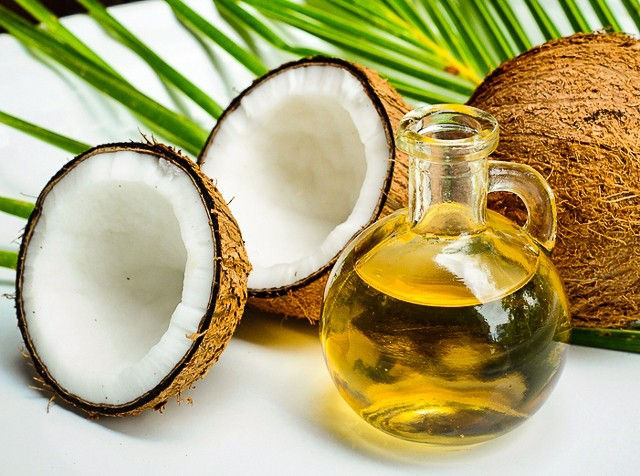Tips for Using Cold Pressed Extra Virgin Coconut Oil in Baking, Frying, and Raw Recipes
- Jenny Clinton
- Jul 7
- 4 min read

Cold pressed coconut oil has become a go-to ingredient for health-conscious cooks around the world. Extracted without heat or chemicals, this oil retains more nutrients, aroma, and natural flavor than regular cooking oils. Whether you’re baking banana bread, frying crispy snacks, or preparing a raw smoothie bowl, cold pressed virgin extra coconut oil adds a touch of richness and a lot of nourishment.
In this blog, we’ll explore simple, practical tips for using this oil across different cooking methods—baking, frying, and raw preparations. You'll also learn how to get the most out of the best cold pressed virgin coconut oil in your daily meals.
Why Choose Cold Pressed Extra Virgin Coconut Oil?
Before we get into the tips, let’s quickly understand why cold pressed extra virgin coconut oil stands out. It's made from fresh coconut meat using a mechanical process that doesn’t involve high heat. This preserves antioxidants, vitamins (especially vitamin E), and beneficial fatty acids like lauric acid—known for its antimicrobial and immunity-boosting properties.
In India, where coconut oil has been used for centuries, there’s a growing shift toward cold pressed options due to their purity, mild taste, and added health benefits. If you're looking for a reliable kitchen staple, cold pressed virgin coconut oil in India is becoming a top choice among dieticians, home cooks, and wellness enthusiasts.
1. Tips for Baking with Cold Pressed Coconut Oil
Cold pressed extra virgin coconut oil can replace butter or other oils in most baking recipes. It lends a subtle coconut aroma and a soft, moist texture to cakes, cookies, muffins, and brownies.
Here’s how to use it right:
Measure accurately: Use the same amount of coconut oil as you would butter or other oils. If a recipe calls for 1 cup of butter, use 1 cup of coconut oil.
Solid or melted?: Coconut oil solidifies below 24°C. If your recipe requires creaming (like cookies), use it in its solid state. For cakes or brownies, melt the oil before mixing.
Enhance flavors: Coconut pairs beautifully with vanilla, chocolate, banana, and tropical fruits. Try adding it to banana bread, coconut macaroons, or even chocolate chip cookies for a healthier twist.
Room temperature ingredients: When using melted coconut oil, make sure your eggs or milk are at room temperature to prevent solidifying the oil mid-mix.
By using the best extra virgin cold pressed coconut oil, you can enjoy delicious baked treats that are healthier and more flavorful.
2. Tips for Frying with Cold Pressed Coconut Oil
Many people are hesitant to fry with virgin coconut cold pressed oil, thinking it might not hold up to high heat. But here’s the good news: it has a smoke point of about 350°F (177°C), which is suitable for most shallow frying and sautéing tasks.
To fry the right way:
Use moderate heat: While it's fine for sautéing vegetables, pan-frying cutlets, or making stir-fries, avoid using it for deep frying at very high temperatures.
Don’t reuse too often: Repeated heating can degrade the oil’s quality. For best results, use fresh oil every time you fry.
Enhance crispy textures: Virgin coconut oil creates a crisp outer layer, making it perfect for pakoras, dosas, or tikkis. It also adds a unique flavor to fried items, especially if you enjoy coastal or South Indian dishes.
Pair it smartly: Combine with spices like curry leaves, mustard seeds, and ginger to elevate the flavor of the oil and your dish.
When you cook with the best virgin cold pressed coconut oil, not only do you get great taste, but you're also giving your family a dose of healthy fats.
3. Tips for Using Coconut Oil in Raw Recipes
One of the biggest advantages of cold pressed oils is their suitability for raw, uncooked dishes. Because they haven’t been exposed to heat, they retain all their natural enzymes and nutrients—perfect for raw food recipes.
Get creative with these raw ideas:
Smoothie booster: Add a teaspoon of coconut oil to smoothies. It blends well with berries, bananas, almond milk, and greens, giving a creamy texture and healthy fat content.
Energy bites: Combine dates, oats, nuts, and a spoon of coconut oil to make no-bake energy balls. Chill in the fridge for a grab-and-go snack.
Salad dressings: Mix with lemon juice, apple cider vinegar, and herbs for a simple tropical-flavored dressing. Keep in mind, coconut oil may solidify if your salad is very cold.
Oil pulling and detox drinks: Some people consume a spoonful of virgin coconut cold pressed oil on an empty stomach or use it for oil pulling due to its antimicrobial properties.
Skin-safe recipes: While not for eating, many raw recipes use this oil for DIY lip balms, scrubs, and moisturizers.
When using cold pressed virgin coconut oil in India, opt for a brand that guarantees purity and cold-pressed extraction to ensure you're getting real nutritional value.
Final Thoughts
From breakfast bakes to evening snacks and refreshing smoothies, cold pressed extra virgin coconut oil is an all-rounder in the kitchen. Its rich nutritional profile, natural aroma, and versatile use make it a worthy alternative to regular refined oils.
Whether you're new to it or already a fan, choosing the best cold pressed virgin coconut oil ensures that your recipes stay clean, tasty, and nourishing. Explore, experiment, and enjoy the delicious benefits it brings to your plate.
Choose the Purity of Gulabgoodness
Looking for a trusted source of cold pressed virgin coconut oil in India? Try Gulabgoodness – known for its commitment to purity, cold-pressed processes, and natural ingredients. Whether you're baking a treat, frying a crispy snack, or blending a smoothie, Gulab Goodness offers the best virgin cold pressed coconut oil to support your wellness journey.
Have questions or want to place an order? Contact us today and experience the goodness of pure, cold-pressed nutrition with Gulabgoodness!




Comments